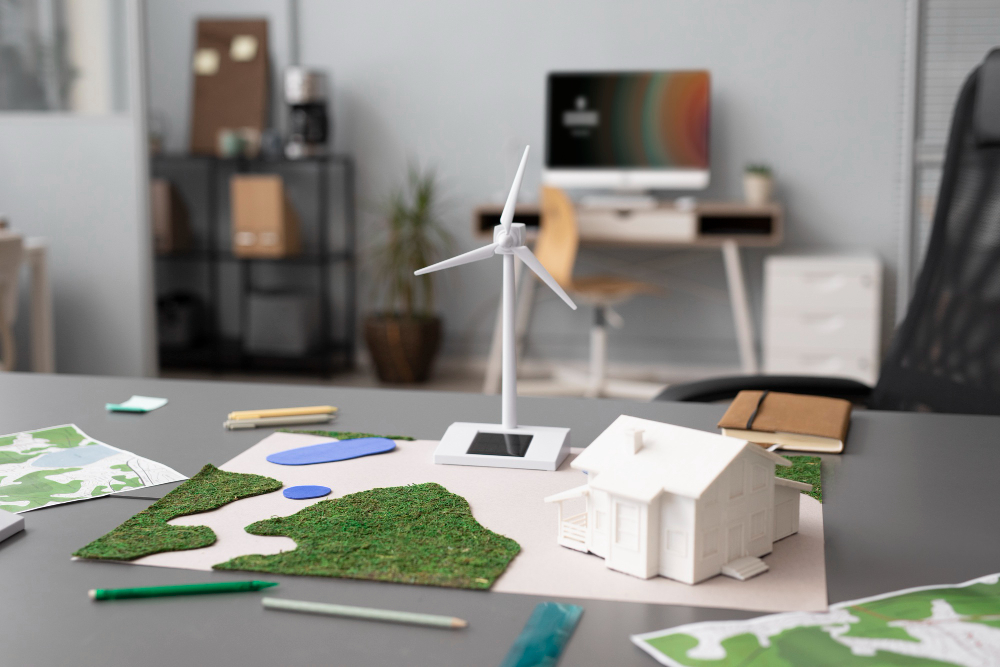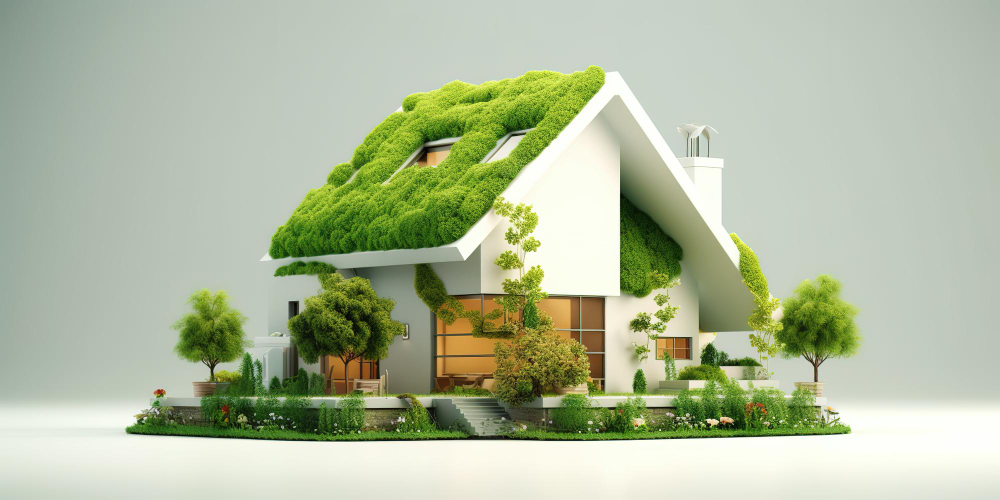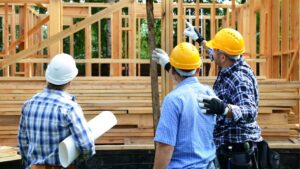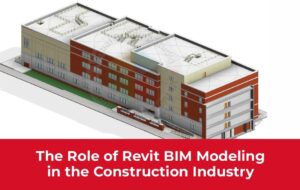Sustainable Homebuilding on a Budget: Cost-Effective Eco-Friendly Strategies
- 1 Principles of Sustainable Home Building
- 2 Technology’s Role in Eco-Friendly Construction
- 3 Implementing Sustainable Building Practices
- 4 ROI: Assessing Sustainable Homes’ Value
- 5 Challenges in Sustainable Home Building
- 5.1 Cost
- 5.2 Knowledge Gaps
- 6 Sustainability Certifications and Standards
- 6.1 LEED Certification
- 6.2 Energy Star
- 7 Future of Sustainable Home Building
- 8 Conclusion
Key Takeaways:
- Embracing the principles of sustainable home construction.
- Leveraging technology for environmentally friendly building practices.
- Practical methods to adopt green building techniques.
- Evaluating the financial payback of investing in eco-friendly homes.
Sustainable home construction has evolved from a niche interest to a mainstream imperative. As awareness of environmental issues increases, so does the demand for homes that minimize ecological impact while enhancing quality of life. This shift reflects a broader global acknowledgement of conserving resources and mitigating climate change. In this context, builders and real estate professionals are focusing on green building principles, integrating advanced technologies, and embracing innovative practices to create eco-friendly and cost-effective homes. One such example of commitment to green building is demonstrated by professionals at newhomestar.com, who are integrating sustainability into their building practices. This article explores the principles, technologies, and economic considerations of sustainable home construction.
Principles of Sustainable Home Building

To build a sustainable home, adherence to key principles is crucial. These principles form the foundation of green construction and include:
Energy Efficiency
Energy efficiency is paramount in sustainable home building. The goal is to reduce energy consumption without compromising comfort. This is achieved through:
- Insulation: High-quality insulation materials reduce the need for heating and cooling by maintaining a stable indoor temperature.
- Windows and Doors: Energy-efficient windows and doors minimize heat loss and gain, improving thermal performance.
- Design and Orientation: Thoughtful design maximizes natural light and ventilation, reducing dependence on artificial lighting and mechanical cooling.
Sustainable Materials
Choosing materials with a low environmental impact is essential. This includes:
- Renewable Materials: Products like bamboo and cork are rapidly renewable and have a lower environmental footprint than traditional materials.
- Reclaimed Materials: Reusing materials like reclaimed lumber reduces the demand for new resources and minimizes waste.
- Low-Impact Materials: Materials that require less energy to produce and have a longer lifespan contribute to sustainability.
Water Efficiency
Water conservation is a critical component of sustainable building. Strategies include:
- Low-Flow Fixtures: Faucets, showerheads, and toilets are designed to use less water without sacrificing performance.
- Innovative Landscaping: Xeriscaping and rain gardens reduce the need for irrigation by utilizing native plants and efficient water management techniques.
Technology’s Role in Eco-Friendly Construction
Modern technology plays a pivotal role in realizing the potential of sustainable housing. Innovations in energy generation, efficiency, and smart home technology have made green building more practical and accessible.
Renewable Energy Systems
Renewable energy technologies are becoming more affordable and efficient:
- Photovoltaic Solar Panels: Solar panels convert sunlight into electricity, reducing reliance on fossil fuels and lowering utility bills.
- Geothermal Heating Systems: These systems use the earth’s consistent temperature to provide heating and cooling, offering a sustainable alternative to traditional HVAC systems.
Energy-Efficient Systems
Advancements in household systems contribute significantly to a home’s sustainability:
- Tankless Water Heaters: These heaters provide hot water on demand, reducing the energy wasted in heating water stored in a tank.
- Advanced HVAC Systems: Modern HVAC systems are designed for higher efficiency and lower environmental impact, often integrating smart controls for optimal performance.
Smart Home Technology
Innovative technology allows homeowners to monitor and control their energy use, leading to more efficient homes:
- Energy Monitoring Systems: These systems track energy consumption in real time, providing insights that help reduce usage.
- Automated Controls: Smart thermostats and lighting systems adjust based on occupancy and preferences, reducing waste.
Implementing Sustainable Building Practices
Building sustainably requires a holistic approach, integrating green principles throughout the construction process. This involves:
Meticulous Planning
Effective planning ensures resources are managed efficiently:
- Site Analysis: Evaluating the site for solar orientation, wind patterns, and natural features informs design decisions that enhance sustainability.
- Resource Management: Planning for material use, waste reduction, and recycling helps minimize the environmental impact.
Material Selection
Choosing the suitable materials is crucial for a sustainable build:
- Environmental Impact: Materials with lower embodied energy and those sourced locally reduce the carbon footprint.
- Health Considerations: Non-toxic, low-VOC (volatile organic compounds) materials improve indoor air quality and occupant health.
Construction Techniques
Sustainable construction techniques reduce waste and pollution:
- Modular Construction: Prefabricated components can reduce on-site waste and construction time.
- Deconstruction: Instead of demolition, deconstruction allows materials to be reused or recycled, minimizing waste.
ROI: Assessing Sustainable Homes’ Value
Investing in sustainable home features can increase upfront costs, but these investments often yield significant returns over time.
Lower Utility Costs
Energy-efficient homes typically have lower utility bills due to reduced energy and water consumption:
- Energy Savings: Homes with solar panels, efficient insulation, and modern HVAC systems use less energy, resulting in lower monthly bills.
- Water Savings: Efficient fixtures and landscaping reduce water usage, lowering water bills.
Increased Property Value
Sustainable homes are increasingly attractive to buyers:
- Market Appeal: As consumer awareness of environmental issues grows, homes with green features often sell faster and at a premium.
- Resale Value: Sustainable features can enhance a home’s resale value, offering a financial return on investment.
Incentives and Rebates
Many regions offer incentives for green building practices:
- Tax Credits: Federal and state tax credits may be available for energy-efficient upgrades and renewable energy installations.
- Rebates: Utility companies and local governments often provide rebates for energy-efficient appliances and systems.
Challenges in Sustainable Home Building

Despite the benefits, sustainable home building faces several challenges:
Cost
The high price of some eco-friendly materials and technologies remains a significant barrier:
- Upfront Investment: The initial cost of sustainable features can be higher than traditional alternatives, deterring some homeowners.
- Long-Term Savings: Education and advocacy are needed to highlight the long-term financial benefits of green investments.
Knowledge Gaps
Misconceptions about sustainable homes can hinder adoption:
- Feasibility: Some believe sustainable homes are impractical or overly expensive, leading to resistance.
- Benefits: A lack of understanding about the advantages of sustainable homes can prevent widespread acceptance.
Sustainability Certifications and Standards
Certifications provide a framework for ensuring that homes meet sustainability criteria and offer reassurance to buyers and builders.
LEED Certification
Leadership in Energy and Environmental Design (LEED) is a prestigious certification that evaluates a building’s environmental performance:
- Criteria: LEED assesses energy use, water efficiency, materials, and indoor environmental quality.
- Benefits: LEED-certified homes often qualify for incentives and command higher market values.
Energy Star
The Energy Star program offers guidelines for energy-efficient products and homes:
- Criteria: Energy Star homes must meet strict energy performance standards, reducing greenhouse gas emissions.
- Benefits: Homes that achieve Energy Star certification typically have lower operating costs and may be eligible for rebates.
Future of Sustainable Home Building
The future of home building is increasingly green, driven by technological advancements, policy support, and growing consumer demand for sustainability.
Advancements in Green Technology
Emerging technologies will make sustainable housing more accessible and affordable:
- Innovative Materials: Research into new materials with lower environmental impact and higher performance continues to advance.
- Energy Storage: Improvements in energy storage solutions, like advanced batteries, will enhance the efficiency and reliability of renewable energy systems.
Policy and Public Support
Governments and communities are increasingly supporting sustainable development:
- Regulations: Building codes and regulations are evolving to incorporate sustainability requirements.
- Incentives: Enhanced incentives for green building practices encourage adoption and innovation.
Mainstream Adoption
As awareness and accessibility grow, sustainable homes are expected to become the norm:
- Market Demand: Consumers are increasingly prioritizing sustainability, driving demand for green homes.
- Industry Standards: As sustainable building practices become standard, the cost and complexity of green construction will decrease.
Conclusion
Sustainable home building is more than a trend; it’s a necessary evolution in response to global environmental challenges. By embracing energy efficiency, utilizing sustainable materials, and leveraging modern technology, builders can create eco-friendly and economically viable homes. While challenges remain, sustainable homes’ financial and environmental benefits make them a compelling choice for the future. As technology advances and policy support grows, sustainable homes will likely become the standard for modern living, providing healthier, more efficient, and environmentally responsible housing options for all.

















